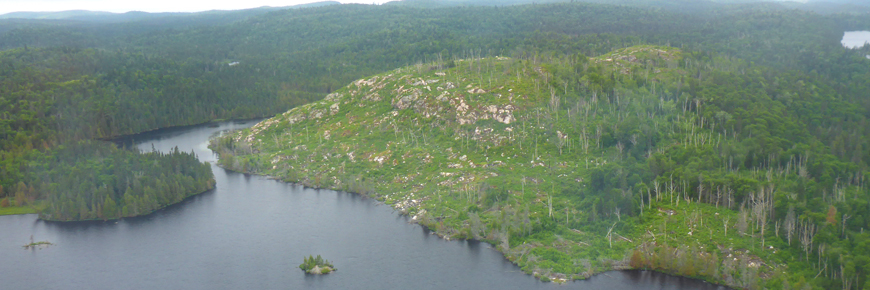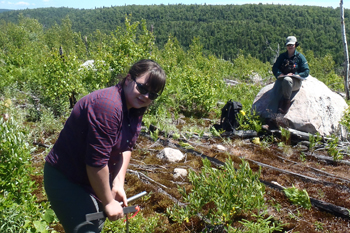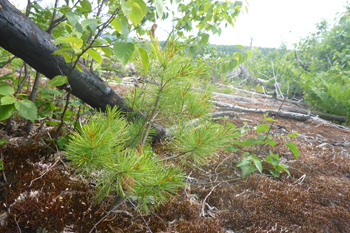
Fire management research
Pukaskwa National Park
By Chris Surita
Have you ever wondered what happens after Parks Canada fire management staff complete a prescribed fire? Well, Lindsay Maendel, a Masters student from Lakehead University, is conducting research on fire and came to Pukaskwa National Park last summer. Check out what she was up to!

Beside Cascade Lake in Pukaskwa's rugged interior forests lies a 217 hectares prescribed fire site from 2012, which is growing back to life.
You may be wondering why Pukaskwa conducts prescribed fires like the one at Cascade Lake. One reason is to simply allow fire, a natural ecological process, to occur on the landscape. In the past fire management meant that complete suppression was the norm. Another reason is to stimulate growth of a number of tree species that need fire to regenerate or that benefit from fire such as black spruce, white spruce, white pine, and jack pine. Also, by doing prescribe fires, Parks Canada staff are able to maintain expertise in fire management, and acquire new knowledge from associated research projects. This is where Lindsay Maendel comes into the picture.
Lindsay Maendel is a Masters student working on a thesis through Lakehead University's Biology department. Parks Canada is supporting Lindsay’s research to learn more about the response of vegetation to both natural and prescribed fire in the region. This past summer Lindsay, and a few Park staff who were helping her, spent a week at the Cascade Lake prescribed fire site collecting data for her thesis.
Lindsay’s research goal is to determine the effects of fire severity on post-fire community composition. In other words, Lindsay is attempting to find out what kinds of vegetative species are present after different types of forest fires. To help answer her question, Lindsay assessed more than twenty (20) 5m by 5m vegetation plots within the Cascade Lake prescribed fire area. Within each plot all individuals were identified to species and measured by percent cover. A number of environmental variables were also measured including soil pH, soil temperature, and soil moisture. Because of the high cost of access in Pukaskwa’s remote forests, Lindsay is also collecting data outside the park in adjacent forests to increase her sample size.

Lindsay is attempting to identify which plants' functional traits are influenced by varying levels of fire severity. A plants’ functional trait refers to how they interact with their environment and the species around them. They can be morphological, biochemical, or even physiological characteristics that influence a given organism's performance or fitness. One example of a functional trait is that jack pine cones in locations that burn more frequently become more serotinous, that is, they are coated in a thicker resin and are more compact in order to be more resistant to wildfire, whereas in locations with a less frequent fire regime, cones are covered in less resin.
With Lindsay's work, Parks Canada will gain insight on the response of vegetation to fires like the prescribed one at Cascade Lake. Stay tuned to hear about the results of her findings over the next couple of years!
- Date modified :